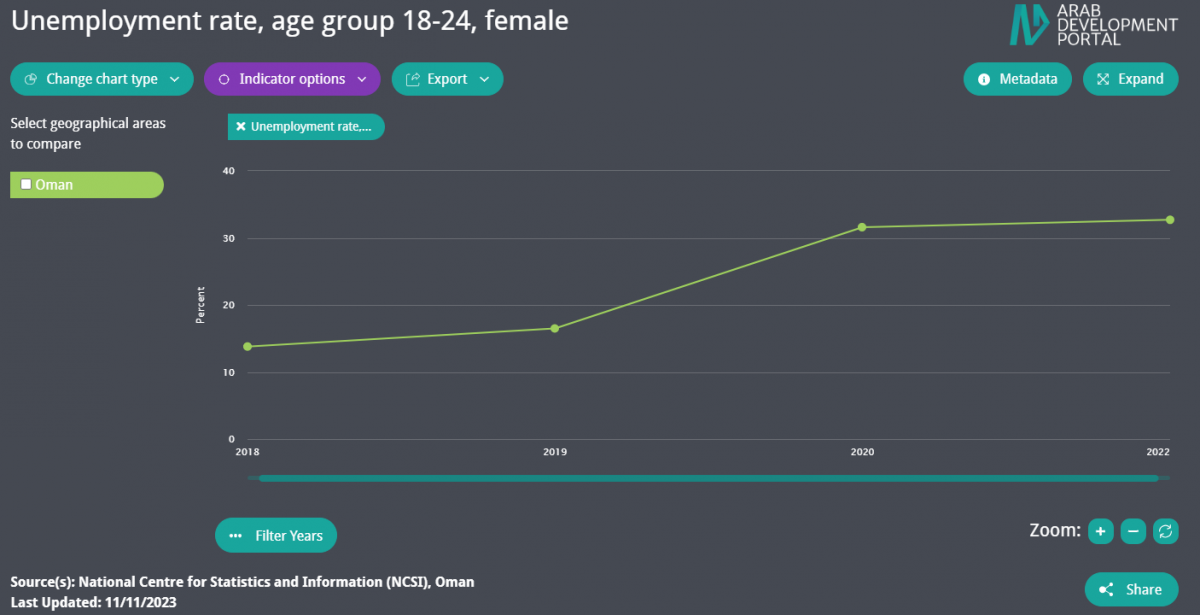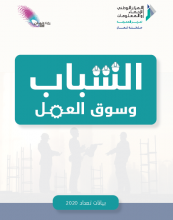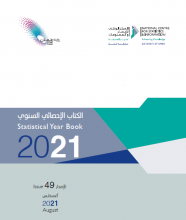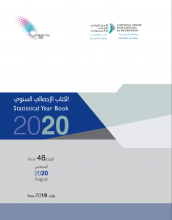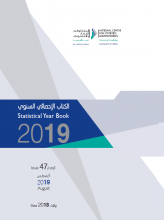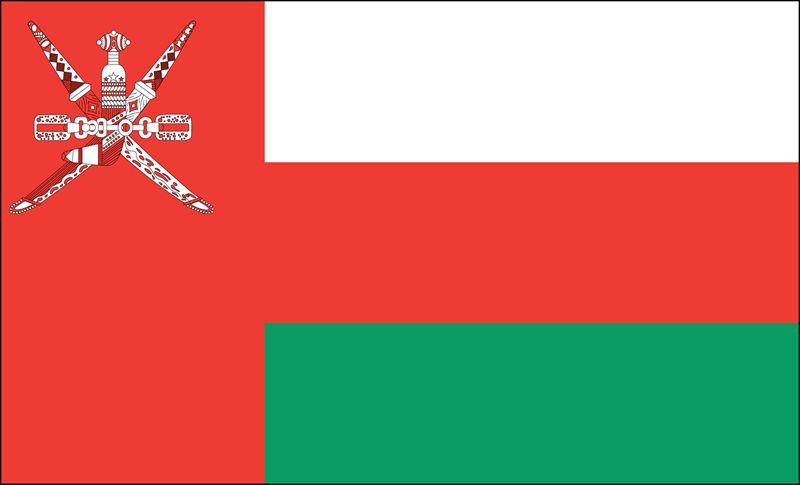 Oman
Oman
A member state of the Gulf Cooperation Council (GCC) and categorized as a high-income economy, Oman has an estimated population of 5.16 million in 2023, according to the country’s National Central for Statistics and Information (NSCI). Population under the age of 30 made up 49.5 percent of the total population in 2022, the highest among the GCC countries. Migrants made up 43.4 percent of the total population. Life expectancy in 2022 reached 78.3 years up from 75.1 years in 2021[1], against an average of 72.5 years in the Arab region.[3] The total fertility rate for Omani women is 3.2 children per woman in 2022, compared to 0.6 births for expatriate women.[1]
The 2021 Human Development Index (HDI) for Oman is 0.816, positioning the country in the very high human development category, ranking 54 out of 191 countries and territories. When the value is adjusted for inequality, the HDI falls to 0.708, a loss of 13.2 percent, largely due to inequality in income.[2]
Education plays a key role in Oman’s long-term development of national strategies. In 2021, the government devoted around 15.4 percent of its expenditures to education up from 13.1 percent in 2018.[1] Concerning the health sector, Omanis have free access to primary health care and basic medication. With government health expenditure as a percentage of total expenditures at 7.9 percent in 2021,[1] out-of-pocket health expenditure (as a percent of current health expenditure) in Oman is the lowest among Arab countries at 4.6 percent.[4]
Like all other GCC countries, Oman has been facing increasing fiscal challenges since the 2014 oil price shock. Consequently, and as part of its 5-year development plan “Vision 2020” and its future Vision “Oman 2040”, the government has planned fiscal reforms, including boosting private sector growth and employment and diversifying its revenues away from hydrocarbon, which accounted for 75.5 percent of government total revenues in 2019.[5] [1]
With the Khazzan-Makarem gas field becoming fully operational, natural gas production jumped by 12.5 percent in 2018. Coupled with an increase in average daily oil production by 0.8 percent and an increase in Omani oil prices by 36 percent in 2018, oil GDP growth increased to 4.7 percent, up from -2.1 percent in 2017. On the other hand, the non-petroleum sector recorded a marginal deceleration in growth during 2018, decreasing from 2.4 percent in 2017 to -0.7 percent in 2018. As a result, the Omani economy witnessed an increase in real GDP growth to 1.8 percent, up from 0.3 percent in 2017. Between 2015 and 2021, Oman recorded a double-digit net lending/borrowing and current account deficit as a percentage of GDP. With the recovery in oil prices in 2018 and spending restraints, the fiscal deficit dropped to -3.1 percent of GDP in 2021, after hitting -15.6 in 2020 then it recovered registering a surplus of 7.4 percent in 2022 The current account deficit improved to -4.5 percent of GDP in 2018, down from 16.6 percent in 2016. The deficit continued till 2021 registering its highest value in 2020 at -16.1 percent which also recovered in 2022 registering a surplus of 6.4 percent.[6] However, macroeconomic vulnerabilities continued to rise, with government debt increasing further to 67.9 and 61.2 percent of GDP in 2020 and 2021 respectively, and then decreasing to 40 percent in 2022.[6]
In 2019 and 2020, real GDP growth decelerated to -1.13 percent and -3.3, after recovering in 2018, mainly due to a decline in oil production by 1 percent and a drop in oil prices from $69.78 per barrel in 2018 to $64.05 per barrel in 2019. In 2021 and 2022, it increased to register 3.1 and 4.3 percent. Although reform measures and diversification efforts are boosting non-oil revenues, the hydrocarbon sector remained the dominant source of government revenues..[6]
In Oman, seven out of 10 employees are expatriates, but national workers account for 89.2 percent of the total employed in the public sector in 2022. Oman’s government encourages nationals to seek employment in the private sector. But of the 1.7 million private sector workers, Omani workers accounted for only 21.9 percent up from 14.9 percent in 2018. The latest official data from NCSI in 2022, shows that the unemployment rate in Oman is 3.3 percent, with youth facing increasing unemployment challenges, at 15.8 percent for ages 18 to 24 and 6.8 percent for ages 25 to 29. Unemployment has been persistently high for young women, registering 32.7 for women aged 18-24) and 26.7 percent for women aged 25-29, in comparison to 12.5 percent and 2.1 percent for young men, respectively.[1]
This overview was last updated in November 2023. Priority is given to the latest available official data published by national statistical offices and/or public institutions.
Sources:
[1] National Centre for Statistics and Information (NCSI), Oman. 2023. [ONLINE] Available at: https://www.ncsi.gov.om/Pages/NCSI.aspx [Accessed 7 May 2020].
[2] United Nations Development Programme (UNDP). 2023. Human Development index. Available at: https://hdr.undp.org/data-center/documentation-and-downloads; https://hdr.undp.org/data-center/country-insights#/ranks [Accessed 25 October 2023].
[3] The World Bank. 2023. World Development Indicators. [ONLINE] Available at: https://databank.worldbank.org/source/world-development-indicators [Accessed 23 August 2023].
[4] World Health Organization (WHO). 2023. [ONLINE] Available at https://www.who.int/data/gho [Accessed 15 October 2023].
[5] Central Bank of Oman. 2018. Annual Report 2018.[ONLINE] Available at: https://cbo.gov.om/Pages/AnnualReport.aspx [Accessed 7 May 2020].
[6] International Monetary Fund (IMF). 2023. World Economic Outlook Database. [ONLINE] Available at:
https://www.imf.org/en/Publications/SPROLLs/world-economic-outlook-databases#sort=%40imfdate%20descending [Accessed 24 October 2023].
Data Highlights
-
The female unemployment rate of the age group 18-24 had more than doubled between 2018 and 2022
